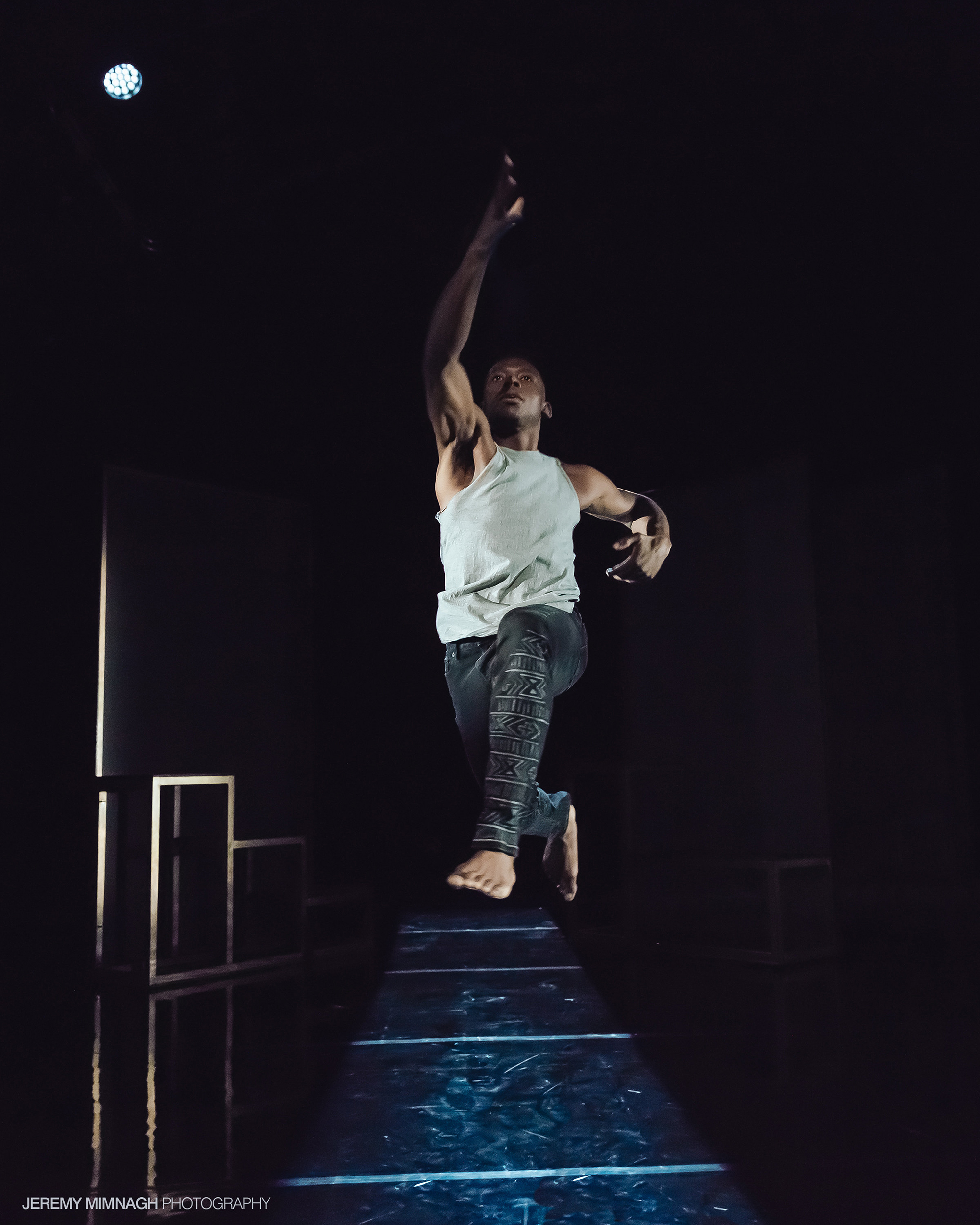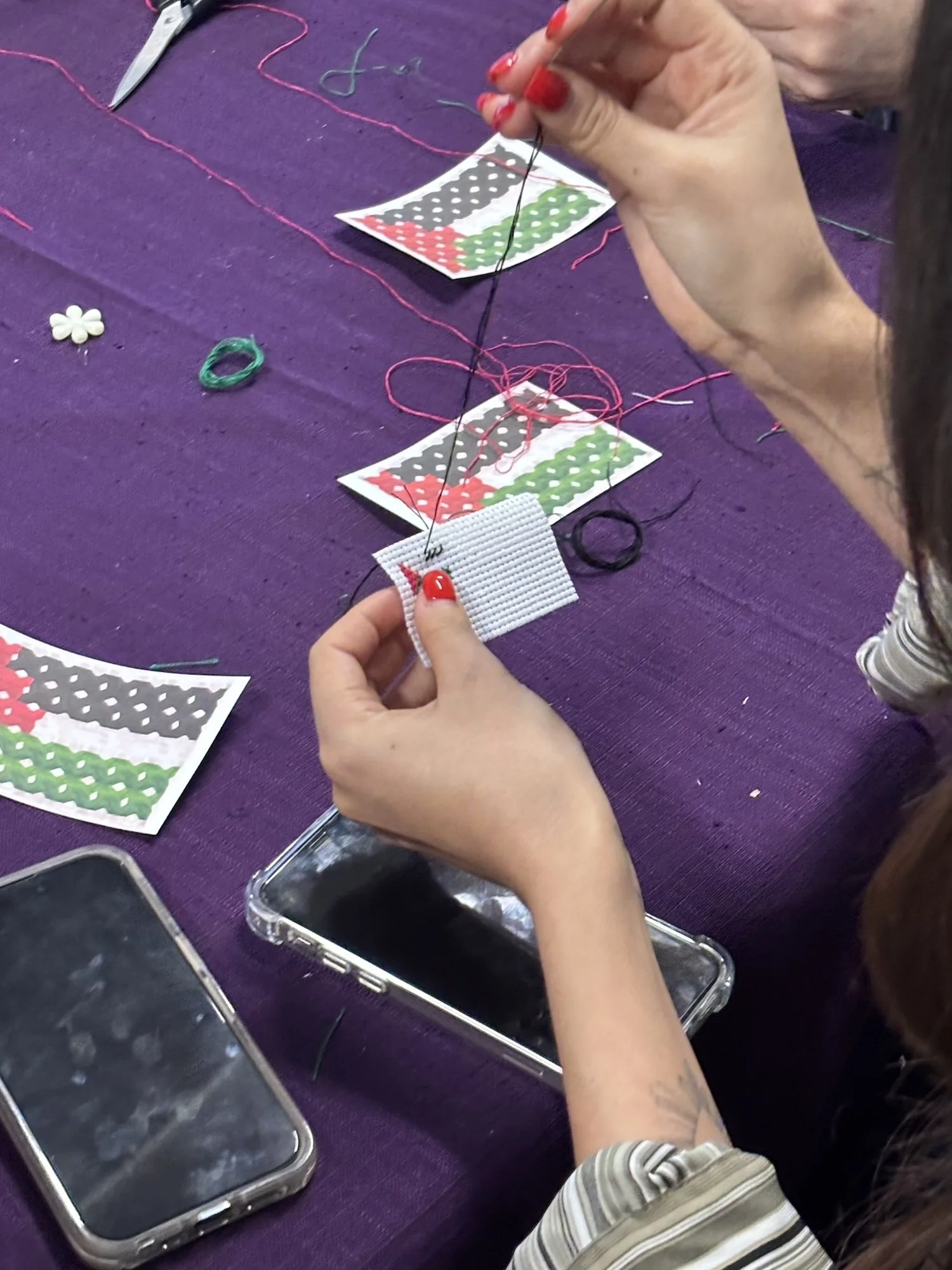Review: Black Boys
/On January 17th, The Saga Collectif and Buddies in Bad Times' co-production of Black Boys began its national theatre tour at The Cultch in Vancouver, B.C.
But it’s not a play, the three performers told the audience in the post show Q&A; it’s an experience.
Stephen Jackman-Torkoff, Tawiah Ben M’Carthy and Thomas Olajide have been working together on this piece—which is devoid of a fourth wall and simultaneously a roundtable conversation on identity, diary entries turned spoken word, an a-cappella musical and contemporary dance showcase—since 2012. The show felt short even at 95 minutes with no intermission due to the powerful performances, Virgilia Griffith’s choreography and Jonathan Seinen’s directing.
With three performers, five screens attached to wheeled benches, and a couple of costume changes, Stephen, Tawiah and Thomas invited the audience to witness the three men workshop their individual queer and black identities. The experience started off with them getting ready for a night out, where “Hallelujah” and predictions of a spiritual experience were shouted out in cannon. Almost immediately, the audience was made aware that even in these men’s shared identities, there was alienation felt between the characters.
Photo by Tanja Tiziana
Stephen stripped down to nothing early on, asking the audience “Too soon?” Without minding the answer. We watched him grapple with his naked mixed-race body and heard how, being recently adopted at age 25, security has never been guaranteed in his life. Tawiah is an immigrant from Ghana with a deep religious practice. He was the first to ask the audience the refrain, “What is black on black love?” As he contemplated potential definitions, Thomas—who we learned is Canadian born and straight passing—laid on his stomach, downstage right, and used a small device to project the movements of Tawiah’s feet on the diagonally arranged screens.
Throughout the experience, the creators of Black Boys never allowed the audience to take themselves seriously for too long. It was an emotional wheel—even between the most aggressive dance sequences, the performers took breaks to caress or laugh between choreography.
The three men each translated the same movements differently, just as they experience being black, queer and male differently. I could have listened to their breath and the sounds of their feet slapping on the ground all evening. It takes a great deal of trust in your performance and audience to interrupt an audible narrative and make viewers interpret a visual one. Between the talking, dancing and singing, I never wanted one form of expression to end, but I was always happy when another began.
Sometimes, audience members became a part of the experience. We were invited to yell “Stella!” with Stephen as he faced his fear of the dark and unknown. Later, a woman was brought on stage to dance and scream with him as he shared his experience with depression while creating the show. He said his depression was a response to his fear that he was sharing too much.
My racial, gender and sexual identities do not necessarily intersect with those of the performers, yet as a human I couldn’t help but try and connect to the performers on stage and the sentiments they were offering. As the three men fought about Stephen’s choice to sing “Amazing Grace” in his show-within-the-show, it reminded me of debates I’ve heard in my own network over the #MeToo movement—how we attempt to measure one person’s trauma against another’s.
“It means different things to different people,” Tawiah repeated while trying to contain the argument between Stephen and Thomas.
In the talk back afterwards, Stephen told the audience that this show was the first time time Thomas had ever yelled “Shut up!” during that scene.
“I don’t always know what I’m going to say,” Stephen added, confirming the talk-back moderator’s assumption that he’d thrown off his on-stage colleagues once or twice during the piece. The performers agreed that the improvised nature of the show scares them; that it’s hard to put out of their mind the risk of an audience witnessing and interpreting truths they themselves are still figuring out.
During the experience, the men talked about sex stores in Toronto where they can’t find a representation of their body or their kind of love. They discussed how 70 percent of Church Street (Toronto’s Davie Street) is a write off, and how even the gay clubs are segregated based on ethnicity. This, in a city celebrated as one of the most multicultural in the world. Black Boys not only highlighted the racism and stereotypes the three men fight against within their shared identity. It also shed light on how other-ing exists between members under the rainbow umbrella of the LGBTQ+ community in modern day Canada.
On the evening I attended the performance, there were less than 10 black people in an audience of nearly 100. Stephen, Thomas and Tawiah noted this in the Q&A afterwards.
“I feel like the show is at its best when the audience is diverse and when you have a good portion of black audience members, because there are certain things that someone who is not in the black community is not going to experientially understand,” Thomas said.
He went on to add that while they tried to form a linear story, their individual histories are fractured—gaps are missing between them, making their story non-linear by nature.
“So if you didn't get this part or you didn't get that part, well, I didn't get it either,” said Thomas, laughing.
Photo by Jeremy Mimnagh
But there’s a privilege they gained from creating this piece, says Tawiah. Their improv sessions and recorded round table discussions were opportunities to have genuine conversations about what blackness means to them individually. They were able to call each other out, but the space was also a safe one, reserved for them to be heard.
The performers said they value the added perspective on queer, black masculinity from a cis-heteronormative, Dutch-Canadian director and black female choreographer. They hope that the audience takeaway will be a new sense of empathy.
“In order to achieve that actual feeling of connection though, you have to know what our differences are,” Thomas said, adding that, historically, black people haven’t been invited to participate in conversations surrounding their own roles on stage.
“Now black is the new black, now I'm worthy of being on a poster. But you still don't know what I am, where I come from. Storytelling can help build those steps instead of just having political correctness and glossing over the differences.”
The piece has yet to be documented, but during the experience the men discuss how in 20 years, three black boys will pick up this script and see how things were in 2016. They’re not sure how it will be passed down, and they share discomfort in the thought of someone playing them as a static character.
At the end of the piece, they all sat on a blanket and said to the audience “Look what we can do.” As the three men lowered their arms from above their head, the stage lights faded.
“That moment is actually about, ‘Look what we did,’” Tawiah said. “We came together and wanted to create something we weren’t seeing on stages. We live in a world where it has to be documented to exist in some way, but the first step is creating more. If you can imagine it, you can create it.”
It’s hard to review an experience that the creators of which have yet to document. What I can confidently say is that this is a piece of art worth going out of your way to see. Your experience will likely differ from mine—Black Boys means different things to different people.







